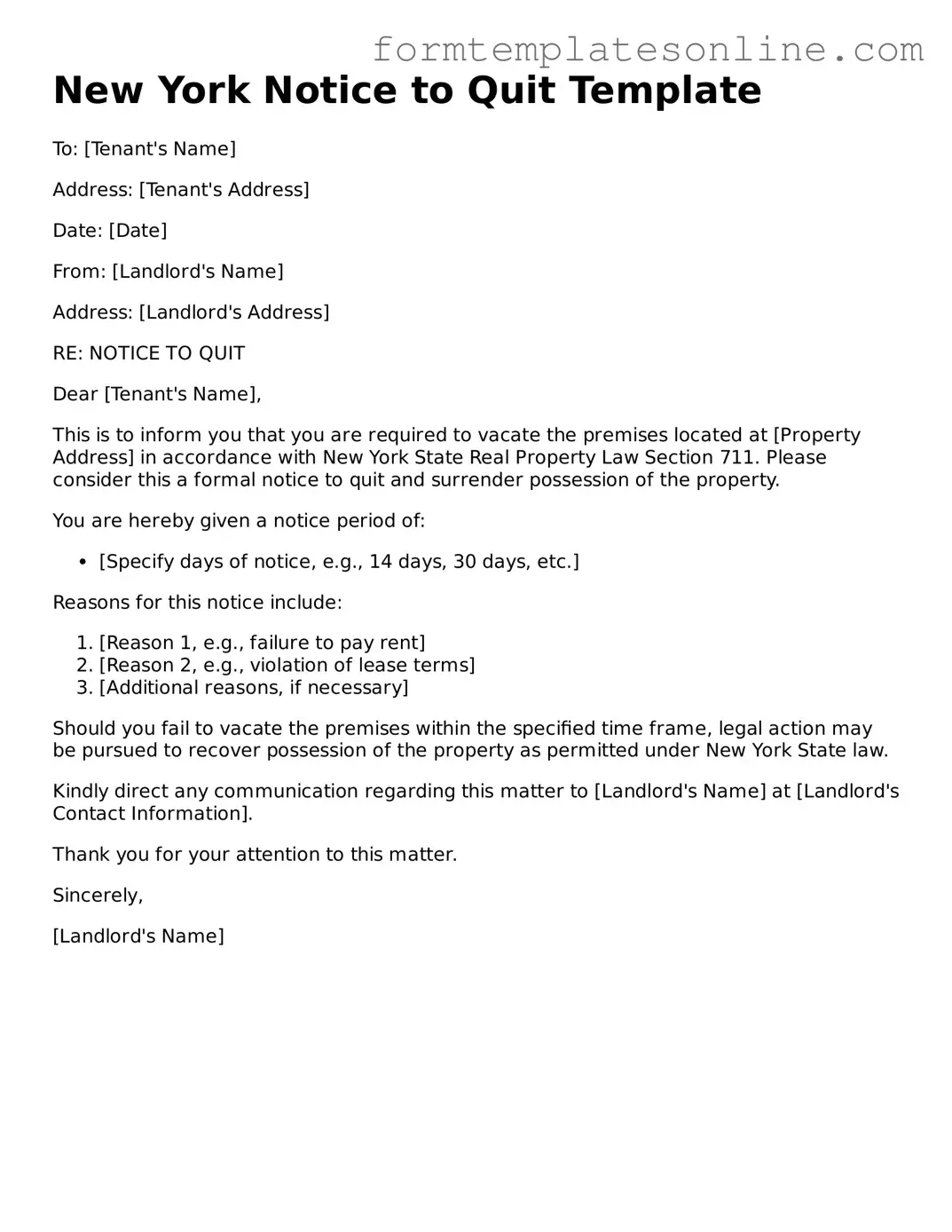What is a New York Notice to Quit form?
The New York Notice to Quit form is a legal document used by landlords to formally notify tenants that they must vacate the rental property. This notice is typically issued when a tenant has violated the terms of their lease, such as failing to pay rent or causing damage to the property. It serves as a precursor to eviction proceedings if the tenant does not comply.
When should a landlord use a Notice to Quit?
A landlord should use a Notice to Quit when they have legitimate grounds for terminating the tenancy. Common reasons include non-payment of rent, lease violations, or the expiration of a lease agreement. It is important for landlords to ensure they have valid reasons and appropriate documentation before issuing this notice.
How long does a tenant have to respond to a Notice to Quit?
The time frame for a tenant to respond to a Notice to Quit can vary based on the reason for the notice. For non-payment of rent, tenants typically have 14 days to pay the overdue rent or vacate the premises. For other lease violations, the notice may provide a different time frame, often ranging from 10 to 30 days, depending on the specific circumstances.
What happens if the tenant does not comply with the Notice to Quit?
If the tenant does not comply with the Notice to Quit within the specified time frame, the landlord may proceed with eviction proceedings. This usually involves filing a petition with the local housing court to obtain a judgment for possession of the property. It is essential for landlords to follow the legal process to avoid potential complications.
Can a tenant contest a Notice to Quit?
Yes, a tenant has the right to contest a Notice to Quit. If a tenant believes the notice is unjust or that they have not violated any lease terms, they can present their case in court. It is advisable for tenants to gather evidence and documentation to support their claims if they choose to contest the notice.
Is a Notice to Quit the same as an eviction notice?
No, a Notice to Quit is not the same as an eviction notice. The Notice to Quit is a preliminary step that informs the tenant of the landlord's intention to terminate the tenancy. An eviction notice typically follows if the tenant does not vacate the property after receiving the Notice to Quit. Eviction involves legal proceedings to remove the tenant from the property.
Does a Notice to Quit need to be delivered in person?
A Notice to Quit does not necessarily need to be delivered in person. Landlords can deliver the notice through various methods, including mailing it to the tenant's address or posting it on the property. However, it is crucial to ensure that the delivery method complies with local laws to ensure the notice is considered valid.
What information should be included in a Notice to Quit?
A Notice to Quit should include essential details such as the tenant's name, the address of the rental property, the reason for the notice, and the deadline for the tenant to vacate. Additionally, it should be signed by the landlord or their representative. Clear and concise language is important to avoid any confusion.
Are there any specific state laws governing Notices to Quit in New York?
Yes, New York has specific laws that govern the issuance of Notices to Quit. These laws outline the required time frames for various lease violations and the legal procedures landlords must follow. It is important for landlords to familiarize themselves with these laws to ensure compliance and to protect their rights during the eviction process.
